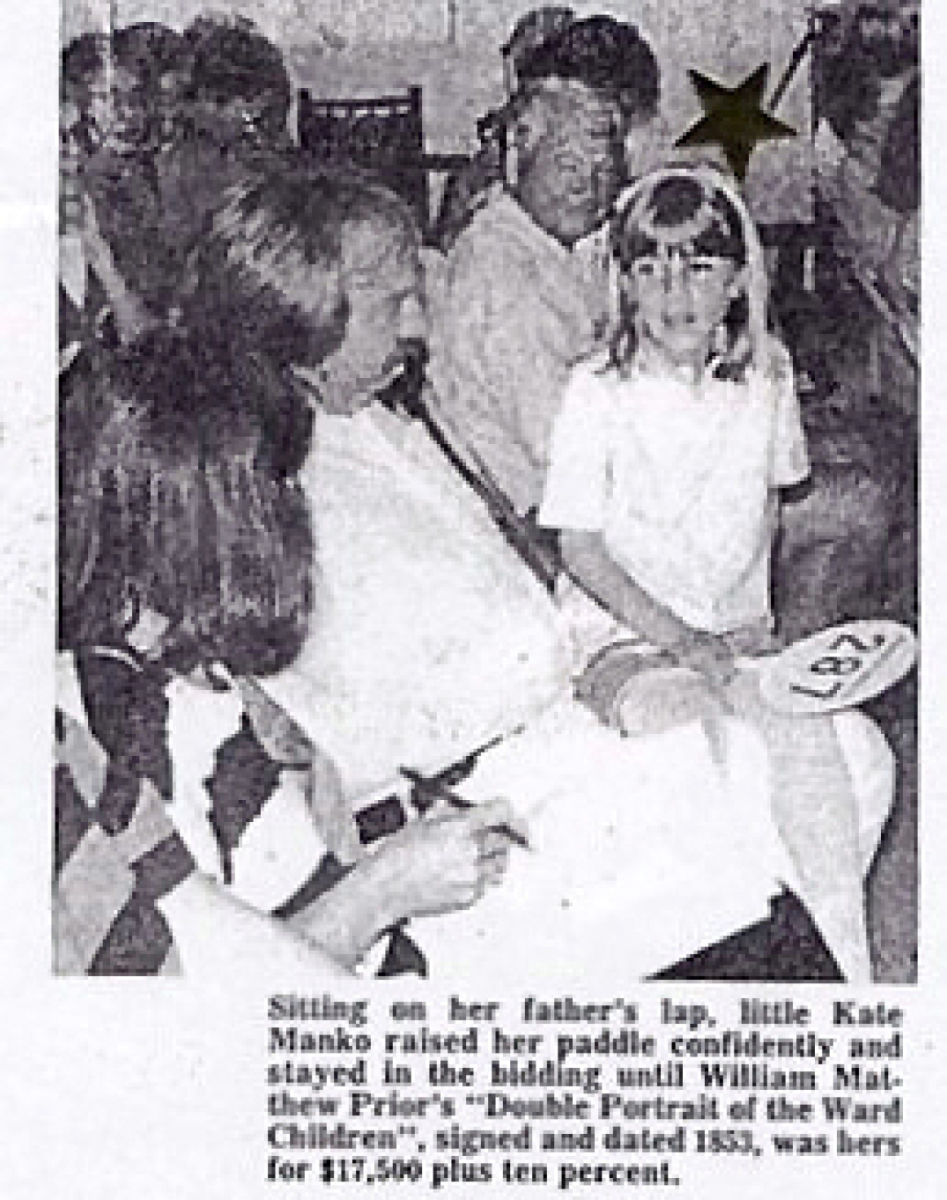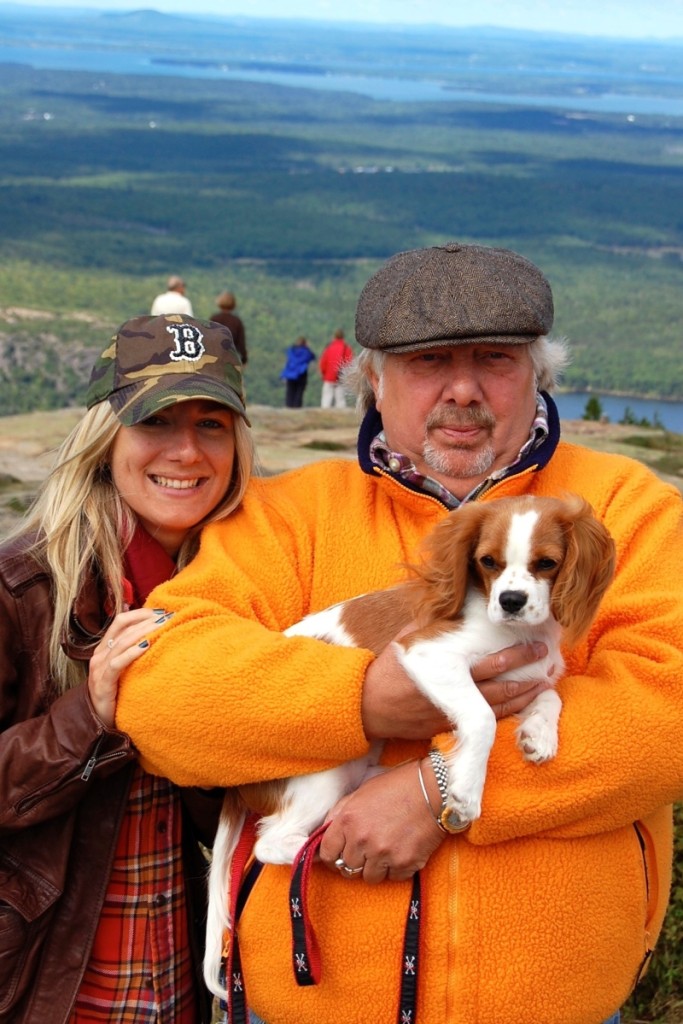Kate Manko’s parents, Ken and Ida Manko, built Manko American Folk Art in Moody, Maine – a home and a way of life out of the process of buying and selling American folk art. Early memories include having to temporarily move the television set because Architectural Digest came to photograph her house when she was young and the adventures of house calls near and far – from fancy houses to cobwebbed barns and attics – with all manner of clients along the way. Manko is bridging her multi-generational world by sharing her love of antiques with her three-year-old son, Maverick, and using social media like Instagram (follow her @k8manko) to cultivate a new generation of folk art enthusiasts. As Father’s Day approached, we reached out to Manko for memories of growing up ‘in the biz.’
How did your father get his start dealing antiques? Can you describe your parent’s partnership in the business?
Both of my parents are from Pennsylvania and started in the business together about 1972; I was born in 1981. Coming back from Vietnam, my mom and dad were living on $100 a month from the GI Bill. Someone had asked them to clean out their attic and gave them $25. On the way to the dump, an old friend of my dad’s, who sold used furniture, gave them $50 for most of the five loads going to the dump. He told them to take the rest to an auction where they made another $20. A business was born from that: cleaning out houses and eventually working with other dealers. They did shows for many years and then eventually moved to Maine full time.
How old were you when you first started working with your parents? What were some of your earliest jobs?
My parents took me everywhere. I sat on my dad’s lap at local auctions and held my mom’s hand in antique shops. We went to antique shows throughout New England. I essentially grew up in the business and officially joined my parents full time in 2004.
What was the best piece of advice your father gave you?
My parents always encouraged me to collect and learn whenever possible. My dad would always say to me, ‘listen to what’s going on, you might need to do this someday.’ If there’s one thing both of my parents have taught me, it’s that people collect for so many reasons. I enjoy most working with people who love what they buy; that is the most gratifying. Between the three of us, we each bring something different to our business and it works for us because we all encourage and trust one another. I have appreciated that they have always encouraged me to be me.

Kate Manko with her parents at a Richard Oliver sale, Kennebunkport, Maine, circa 1988-89, successfully bidding on William Matthew Prior’s “The Ward Children” double portrait, which would eventually find its way into the Nina Fletcher Collection. Maine Antiques Digest photo.
Do you have memories you want to share with us?
When I was in first grade, my parents’ home and business in Maine were featured in Architectural Digest. I remember but didn’t really understand the magazine coming and setting up lots of lights and moving literally everything around in our house. Later, when the magazine came out, one of my classmates brought a copy of it to school and wanted to show everyone. I came home that day and asked my dad what it all meant, that was when I truly understood what my parents did for a living. The kids at school didn’t understand it necessarily; they would ask me if I was famous since I was in a magazine, and what was an antique? I feel like I spent many years trying to explain what it was my parents did as a child. When my friends would come over, they would look around and wonder what everything was.
Paige Rense was the editor of Architectural Digest when we were featured; when she retired and auctioned her collection, I told my parents I wanted to buy something of hers because she had featured us. I ended up buying a piece of hers I have at my house when you enter our home. It just reminds me of the circle of life and collecting in its own way.
Every summer, my parents would always have us drive up along the coast of Maine to go ‘picking’ or ‘antiquing.’ I hated it as a kid because it usually meant I was jammed in the backseat of the car with lots of antiques. But as I have gotten older, I look forward to it. We still all go, even if it’s in separate cars.
I think one of the greatest things about this business are the people. Because I met so many of my parents’ customers at a young age, when I was older and traveling, I always found their customers to be so inviting. I am thankful to have been welcomed into so many wonderful homes.
Do you have a piece that your father gave you that you’d never sell? What makes it so special?
My father gave me a piece of folk art (not always Christmas related) for Christmas every year for 25 years. I hold that collection close to me. As a result, I have started collecting pieces here and there for my son Maverick, who just turned three. I appreciate that he notices art because he is growing up around it. He likes to comment on what comes in and out of the house and he likes to go into the barn gallery and look around and ask about things.
Social media is changing the way dealers do business. How is Manko Antiques & American Folk Art adapting?
I find that our customers still like to come to Maine and have the full experience: eat a lobster, buy an antique. But social media is helping them find where to go and also helping them tell their own story. I think this pandemic has brought social media more to light as we need all outlets to reach out and keep business going. I have found that I have met many people via Instagram that I might not have met otherwise. I enjoy posting on Instagram. My friends finally understand what it is I do for a living. It’s a good learning tool for a conversation that might otherwise not come up.
-Madelia Hickman Ring





